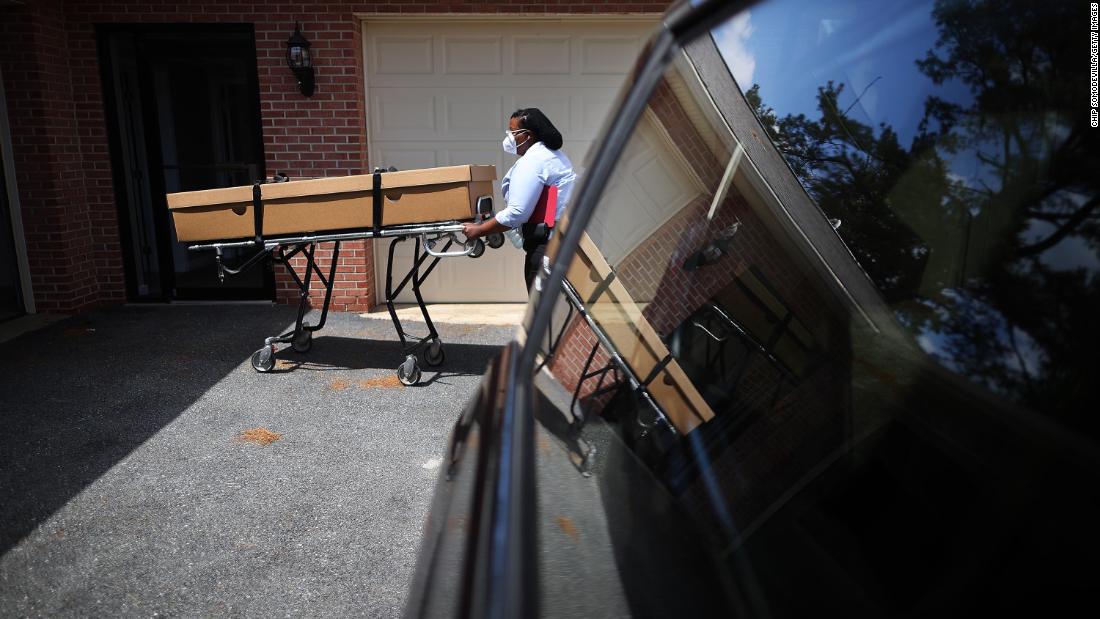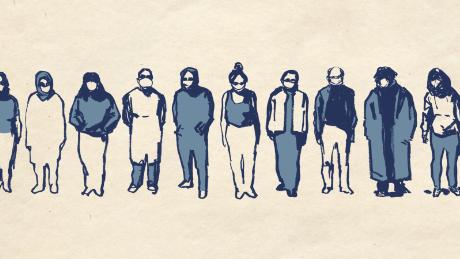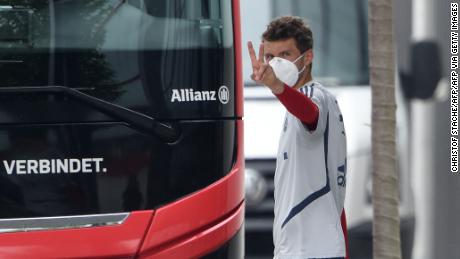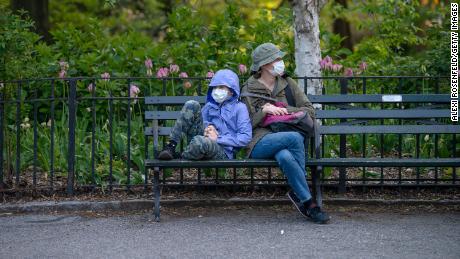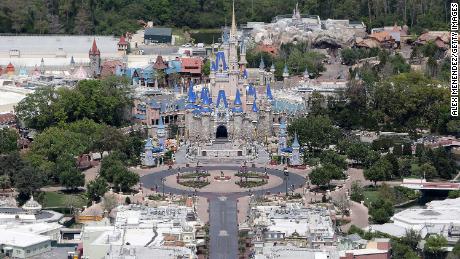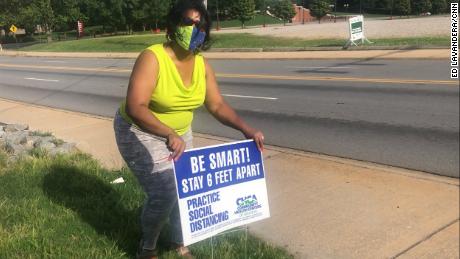Nearly 900 Americans died a day to get to 100,000 US dead
But since then, an average of nearly 900 Americans have died every day from Covid-19.
“There are moments in our history so grim, so heart-rending, that they’re forever fixed in each of our hearts as shared grief. Today is one of those moments,” he wrote. “To those hurting, I’m so sorry for your loss. The nation grieves with you.”
The victims have represented some of the best of humanity:
Their lives are gone, but the collective struggle remains. Coronavirus is still spreading unabated, and no one knows how many more Americans will die from Covid-19.
Americans wearing masks will keep case counts down, expert says
Even as the number of deaths reaches such a grim milestone, Americans are at odds over whether it’s necessary to keep taking protective measures, including wearing a face covering.
“We now have really clear evidence that wearing masks works — it’s probably a 50% protection against transmission,” Dr. Chris Murray, director of the Institute for Health Metrics and Evaluation, or IHME, at the University of Washington, told CNN late Tuesday.
“And so, what happens in the next month or two is very much in the hands of how people respond.”
The number of US deaths forecast by August has shifted to 132,000 — 11,000 fewer than projected a week ago — according to the IHME’s model, one of more than a dozen highlighted by the US Centers for Disease Control and Prevention.
Behavioral changes like wearing masks could be responsible for the reduction, Murray said.
Dr. Anthony Fauci told CNN that “simple” things like wearing masks and washing hands are crucial.
“Those are the things that everybody should seriously consider doing,” said Fauci, the nation’s top infectious disease expert.
Still, warmer weather and a holiday weekend drew large crowds from their homes and into public spaces recently, with many faces uncovered.
Fauci said such close gatherings of people without masks were “very troubling. … That’s really tempting fate and asking for trouble.”
A “second wave” of coronavirus infections is not inevitable, Fauci said, with proper identification, isolation and contract tracing.

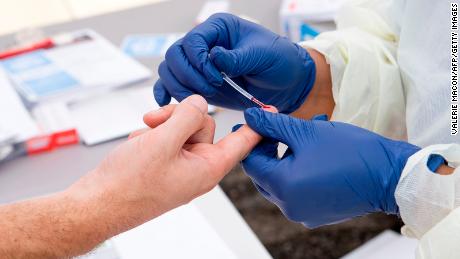
A health worker takes a drop of blood for an antibody test at the Diagnostic and Wellness Center in Torrance, California.
How the infection numbers are trending
Infection rates vary from state to state.
Illinois appears to be entering a “downward trend,” with the week ending May 16 being the first with a lower number of coronavirus deaths than the week before, Illinois Public Health Director Dr. Ngozi Ezike said at a news conference.
But the possible trend is still at its early stages, Ezike said, and the public has a responsibility to continue to decrease transmission.
New York, the hardest-hit state for the virus, reported Monday that 73 residents died in a single day, the lowest daily death toll since the start of the pandemic in the US, Gov. Andrew Cuomo said.
But other regions do not have the same good news. There were 14 states as of Wednesday in which the number of cases was still trending upward.
Mississippi Gov. Tate Reeves warned residents to stay vigilant because the state is still seeing a steady number of cases.
California on Wednesday became the fourth state with more than 100,000 cases. New York, New Jersey and Illinois were the first three to the milestone. More than 3,800 people have died in California.
Hospitalizations have been declining slightly over the past two weeks, and the number of those in ICU beds remains stable, Gov. Gavin Newsom has said.
The state was among the first to impose a stay-at-home order and has been on the back end of lifting restrictions.
Washington, DC will move Friday into Phase 1 of reopening, Mayor Muriel Bowser announced at a news conference.
The district has had a 14-day decline in cases of community spread of coronavirus as reported by the DC Department of Health’s calculations, one of the district’s key metrics for reopening.
“I want to clarify this: Covid-19 is still in our community, in our region, in our nation,” Bowser said. She warned that moving into Phase 1 means more people can get exposed as more people are out in the community.
There have been 8,406 cases of the coronavirus in the district, with 445 deaths.


A waiter serves patrons at L’escale restaurant in Greenwich, Connecticut.
Bowser said the July 4 parade Trump wanted was canceled “several weeks ago.” She said that “our big concern would be around how to manage fireworks and we will continue to work with (the Department of the) Interior on that.”
Steady numbers spark reopenings
Every state has begun to reopen, lifting restrictions on businesses and public spaces often in phases specific to the needs of the area.
Large gatherings could resume soon in Florida.
Employees and guests would be required to wear face coverings and go through temperature screenings before entering the parks. Guests would have to reserve attendance in advance.
There would be soft openings before July 11 for employees and others, McPhee said. Orange County’s mayor and Florida’s governor still must sign off.
Also in Florida, Miami-Dade County Mayor Carlos Gimenez announced that beaches and hotels may reopen on Monday.
Gimenez said lounging on the sand, walking, swimming and jogging will be allowed with restrictions, including social distancing of at least 6 feet and wearing masks when that is not possible.
Hotels will be allowed to reopen at 100% capacity, with common areas held to 50% capacity.
In California, Gov. Newsom said, “We are walking into the unknown.”
More than 80% of counties in the state are allowed to begin the third of a four-phase reopening plan. This stage includes allowing hair salons and barbershops to reopen along with retail shops.
The state’s final phase of reopening includes resumption of concerts and spectator events, but Newsom says, “we are not there yet.”
CNN’s Madeline Holcombe, Natasha Chen, Nicky Robertson, Christina Maxouris, Arman Azad, Keith Allen, Andy Rose, Jennifer Henderson, Rob Frehse and Holly Yan contributed to this report.
![]()


